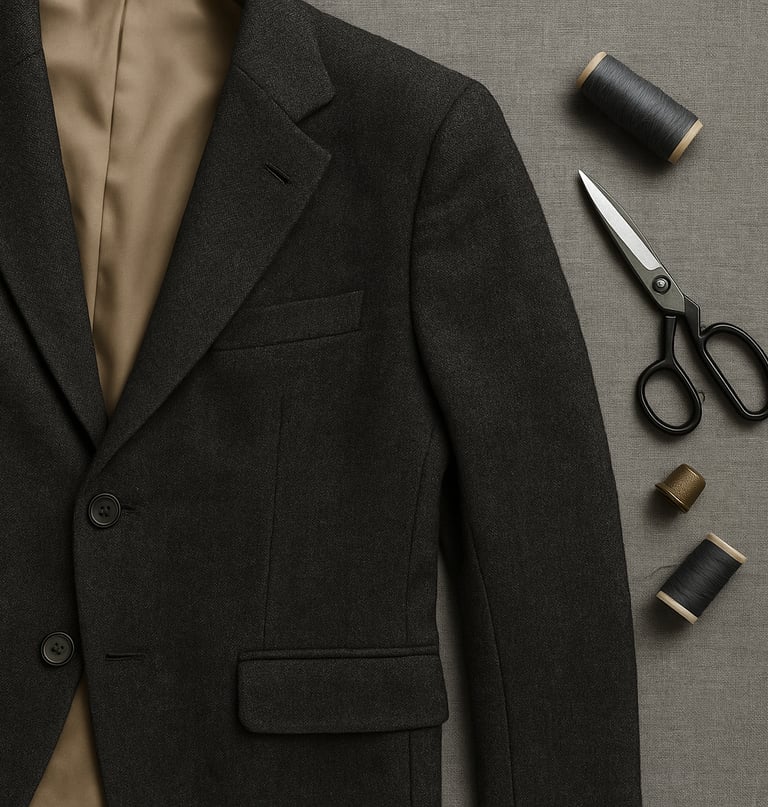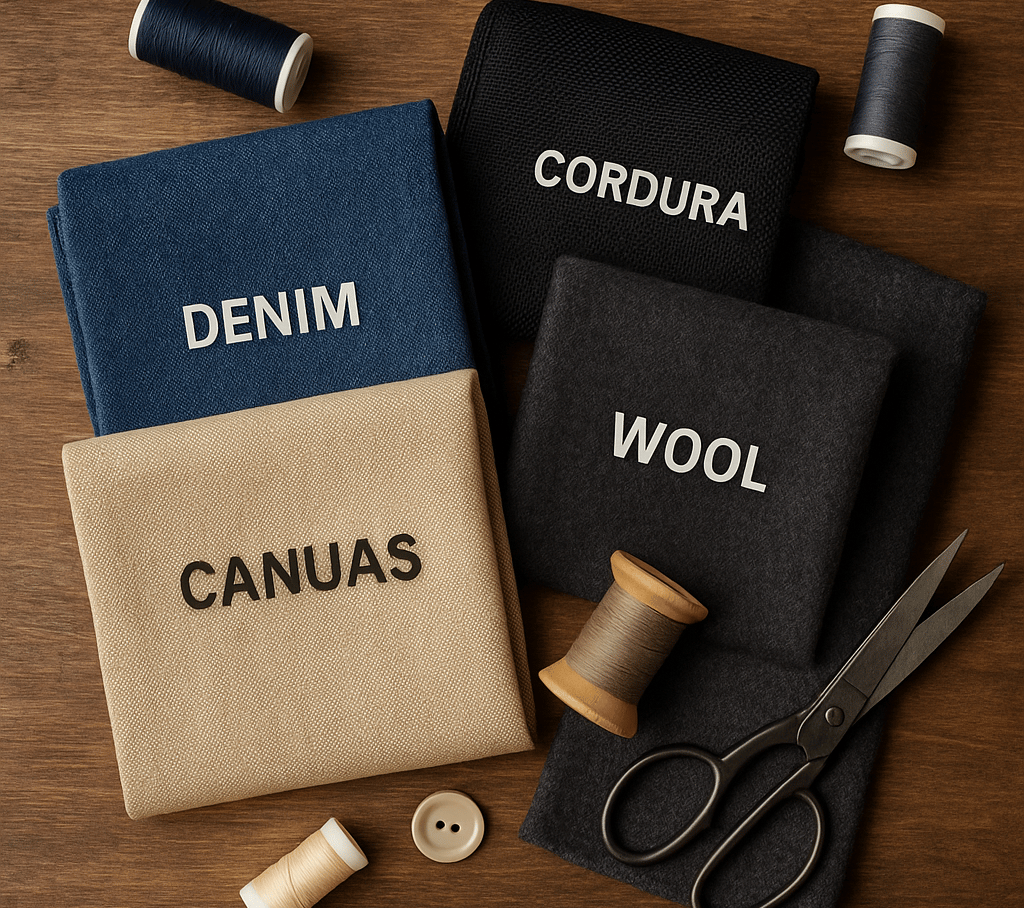Discover amazing discounts on sewing patterns-Fabric-Doll CLothes-eBooks-Yarn-& Other Handmades!
What Is the Most Durable Fabric to Sew?
Learn which fabrics are the most durable for sewing and how to construct garments that last. Includes expert tips on fabric care, seam reinforcement, and tailoring.
SEWING TIPS AND TECHNIQUES
Rhonda Harris
7/29/20253 min read
A Comprehensive Guide to Long-Lasting Sewing Fabrics
As you sew your wardrobe, you want your handmade garments to last as long as possible. While durable sewing fabric is a great starting point, the longevity of a garment also depends on how it’s constructed—right down to the seams, tailoring, and lining.
In this guide, we’ll explore the most durable fabrics for sewing and how to sew garments that stand the test of time. My mother always taught me that quality matters more than quantity. Is less really more when it comes to your wardrobe? Let’s find out.
The Most Durable Sewing Fabrics
When it comes to strength and longevity, some fabrics are simply built to last. These are the go-to choices for sewing garments and items that can withstand regular use, wear, and washing.
Denim
Denim is a tightly woven cotton fabric known for its rugged durability. It’s a classic for jeans, jackets, workwear, and aprons. It resists abrasion and holds up well through repeated washing and wear.
Canvas
Canvas is a heavy-duty fabric made from cotton or linen. It’s tough and versatile—ideal for bags, upholstery, and outerwear. You’ll find canvas in multiple weights, and some versions are treated to resist water and mildew.
Cordura
Cordura is a high-strength synthetic fabric with excellent resistance to abrasions, tears, and scuffs. It's used in jackets, workwear, motorcycle gear, hiking pants, backpacks, and duffel bags. A favorite for active lifestyles.
Nylon
Nylon is another strong synthetic fabric that performs well in high-friction applications. It’s commonly sewn into sportswear, travel gear, and outerwear. Nylon holds its shape and durability over time.
Leather
Genuine leather is one of the most durable natural materials. With proper care, it can last for decades. Leather is used in everything from jackets and shoes to bags, chaps, and furniture upholstery.
Wool (High Quality)
High-quality wool, such as merino or worsted wool, is naturally resistant to dirt, odors, and wrinkles. Tailored wool garments, such as coats, pants, and blazers, hold up well when properly cared for.
Choosing Durable Fabrics by Category
Here’s a breakdown of long-lasting fabrics by type:
Natural Fibers
Cotton: Choose heavyweight or tightly woven cottons, such as twill or gabardine.
Linen: Stronger when tightly woven and properly finished.
Wool: Look for high-quality weaves, such as merino, flannel, or worsted.
Silk: Heavier silks with tight weaves have better durability.
Blended Fabrics
Cotton-Poly Blends: Add strength and wrinkle resistance.
Wool Blends: Often include nylon or polyester for improved performance.
Synthetics
Nylon: Excellent for its abrasion resistance and structural integrity.
Polyester: Colorfast, wrinkle-resistant, and long-lasting.
Acrylic: Durable for knitwear and cold-weather garments.
Specialty Fabrics
Denim: Opt for weights of 12–16 oz for added strength.
Canvas: Use heavyweight canvas for bags, coats, or upholstery.
Cordura: Ideal for rugged outerwear and gear.
Note: Fabric durability depends on quality, weave, and proper maintenance. Even strong fabrics won’t last without care.
How to Sew Garments That Last
Your fabric choice is only the beginning. How you construct your garment matters just as much. From seam alignment to tailoring, these small touches create garments you’ll wear for years.
Reinforce Your Seams
Seams should be flat, neat, and reinforced—no puckering or loose threads.
Match stripes and patterns at seams when cutting. It elevates the look and quality.
Tailoring Details Matter
Always include a back seam on jackets or blazers—it shapes the garment and allows for adjustments.
Reinforce shoulder seams with ribbon or twill tape to prevent stretching.
Add facing and interfacing to stabilize and support garment shape.
Use a Lining
Lining adds structure, hides inner seams, increases warmth, and protects the fabric from body oils and sweat. It also helps the garment glide over the body when worn.
Hem with Care
A solid hem keeps its shape and prevents unraveling with wear and wash.
Reinforce High-Stress Areas
Focus on pockets, zippers, buttons, and seams that experience frequent movement. Use extra stitching, interfacing, or even small patches where needed.
Care and Maintenance = Longevity
Even the most durable fabrics can wear down if not cared for properly. To extend the life of your garments:
Follow fabric-specific care instructions.
Avoid excessive heat, harsh chemicals, and prolonged sun exposure.
Use gentle detergents and proper ironing settings.
Store garments with care—use the right hangers and garment bags when needed.
Address small repairs early before they become big problems.
Timeless Patterns Last Longer, Too
Trendy pieces fade—but classic silhouettes remain wearable year after year. Choosing timeless sewing patterns is a key factor in creating a wardrobe that lasts.
Pair your durable fabric with a versatile design, and you’ll have something that outlasts fashion cycles and maintains high-quality standards.
If you sew with care, choose the right fabric, and construct garments with longevity in mind, your clothes will last much longer—and you’ll spend less replacing them. Quality over quantity truly does matter. It’s not about having more—it’s about having what lasts.
✂️ Ready to sew with fabrics that last?
Browse my sewing patterns, fabric bundles, and PDF tutorials in The Needle Market Shop for long-lasting results that go beyond fast fashion.


Curated Sewing Goods Online – Based in the USA
Your source for sewing inspiration: patterns, fabrics, notions, sewing eBooks, and handmade goods
Reach Out Contact Me
rhonda@theneedlemarket.com
Proudly powered by Hostinger
Start your own site with Hostinger



